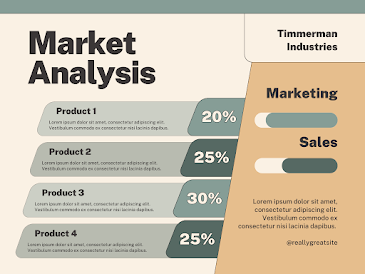Read more
A data analyst is responsible for collecting, processing, and performing statistical analyses on large datasets. Their main goal is to discover useful information, inform conclusions, and support decision-making processes. Here are some key responsibilities and skills associated with a data analyst:
Key Responsibilities:
- Data Collection: Gathering data from various sources, such as databases, spreadsheets, and APIs.
- Data Cleaning: Ensuring data quality by identifying and correcting errors or inconsistencies in the dataset.
- Data Analysis: Using statistical techniques and tools to interpret data, identify trends, and generate insights.
- Reporting: Presenting findings in a clear and concise manner, often through visualizations (charts, graphs) and reports.
- Collaboration: Working with other departments (e.g., marketing, finance, operations) to understand their data needs and provide relevant insights.
- Tools and Software: Proficiency with tools such as Excel, SQL, R, Python, and data visualization software like Tableau or Power BI.
Key Skills:
- Analytical Skills: Ability to analyze large datasets and identify patterns or trends.
- Statistical Knowledge: Understanding of statistical methods and how to apply them.
- Technical Proficiency: Familiarity with data analysis tools and programming languages.
- Attention to Detail: Ensuring data accuracy and quality in analysis and reporting.
- Communication Skills: Ability to explain complex data insights to non-technical stakeholders.
- Problem-Solving: Identifying issues in data processes and finding effective solutions.
Typical Workflow:
- Define the Problem: Understand the business question or problem to be solved.
- Collect Data: Gather relevant data from internal and external sources.
- Prepare Data: Clean and preprocess data to ensure it’s ready for analysis.
- Analyze Data: Use statistical and computational techniques to analyze the data.
- Interpret Results: Draw conclusions and provide insights based on the analysis.
- Communicate Findings: Create reports, dashboards, and visualizations to present findings to stakeholders.
If you have specific questions or need more detailed information about any aspect of being a data analyst, feel free to ask!
Overview of a Data Analyst
A data analyst plays a crucial role in helping organizations make data-driven decisions. Their primary responsibility is to collect, process, and analyze data to extract meaningful insights and trends. Here is a detailed overview:
Key Responsibilities:
Data Collection:
- Gathering data from multiple sources such as databases, surveys, web scraping, and APIs.
- Ensuring data is collected in a structured and standardized manner.
Data Cleaning:
- Identifying and correcting errors, inconsistencies, and missing values in the data.
- Standardizing data formats and structures for seamless analysis.
Data Analysis:
- Employing statistical techniques and data analysis tools to interpret data.
- Using descriptive, inferential, and predictive analytics to uncover patterns and insights.
Data Visualization:
- Creating visual representations of data using charts, graphs, and dashboards.
- Utilizing tools like Tableau, Power BI, or Python libraries (e.g., Matplotlib, Seaborn).
Reporting:
- Compiling analysis results into reports and presentations.
- Communicating findings to stakeholders in a clear and actionable manner.
Collaboration:
- Working with different departments to understand their data needs.
- Assisting in designing experiments and surveys to collect relevant data.
Key Skills and Tools:
Technical Skills:
- Proficiency in data analysis tools and programming languages (e.g., SQL, Excel, Python, R).
- Knowledge of data warehousing and ETL (Extract, Transform, Load) processes.
Analytical Skills:
- Strong analytical and problem-solving abilities.
- Ability to apply statistical techniques and machine learning algorithms.
Data Visualization:
- Skills in creating clear and informative visualizations.
- Familiarity with data visualization tools like Tableau, Power BI, and D3.js.
Communication Skills:
- Ability to explain complex data insights to non-technical stakeholders.
- Strong written and verbal communication skills.
Attention to Detail:
- Ensuring the accuracy and integrity of data analysis.
- Meticulous in checking and validating data sources and results.
Business Acumen:
- Understanding the business context and requirements.
- Aligning data analysis efforts with business goals and objectives.
Typical Workflow:
Define Objectives:
- Understand the business problem or question.
- Determine the goals and scope of the analysis.
Data Collection:
- Identify and gather relevant data sources.
- Ensure data is collected efficiently and accurately.
Data Preparation:
- Clean and preprocess data for analysis.
- Handle missing data, outliers, and ensure data quality.
Data Analysis:
- Perform exploratory data analysis (EDA).
- Apply statistical techniques and models to analyze data.
Interpretation:
- Draw meaningful insights and conclusions from the data.
- Relate findings to business objectives.
Reporting and Visualization:
- Create visualizations and dashboards to present findings.
- Compile reports and presentations for stakeholders.
Actionable Recommendations:
- Provide data-driven recommendations and insights.
- Assist in decision-making processes based on analysis.
Common Challenges:
- Dealing with large and complex datasets.
- Ensuring data privacy and security.
- Balancing accuracy with speed in data analysis.
- Keeping up with rapidly evolving tools and technologies.
Data analysts are integral to the data-driven decision-making process within organizations, providing the insights necessary to drive strategy and operations effectively.








0 Reviews